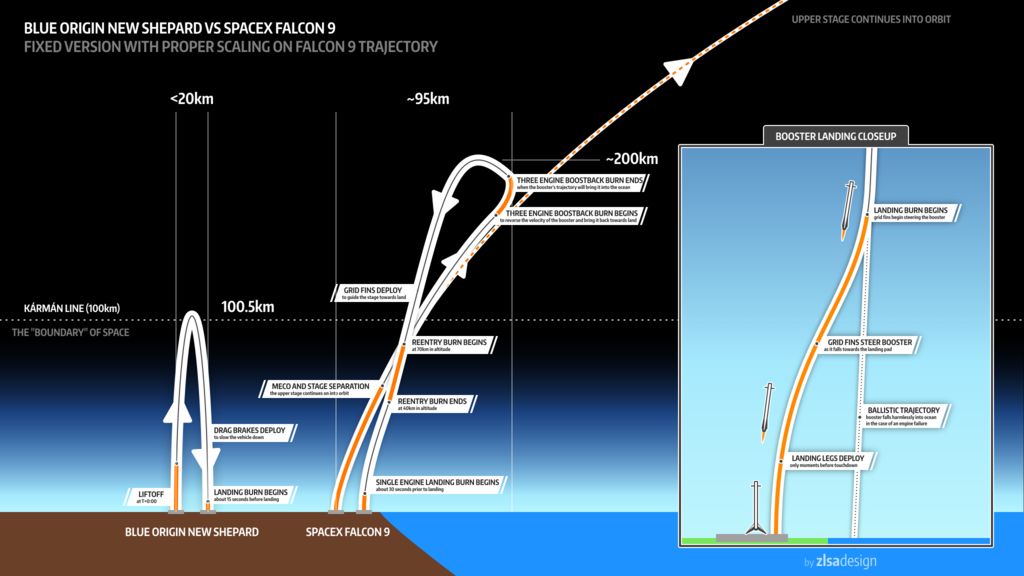Yeah, it's a similar control problem to balancing a pencil on its end. However, this particular pencil starts off falling at terminal velocity and it's much more difficult to land successfully on a barge at sea than on a stable landing pad.
Back in the 60s, NASA considered modifying the Saturn V first stage (for use with the Shuttle) so that it could land back at the Cape but it was only ever a concept.
Saturn Shuttle
Cool looking design. How would such a design work when the rocket is already in space and used to deliver the vehicle to the Moon or even Mars?
Another question is if two rockets with the same mass but different heights one being twice as tall as the other landed vertically would the smaller more squat rocket possibly experience tipping over like the taller rocket?
I think the next big test for vertical recovery would come in launching a Blue Orion from a Stratolaunch carrier horizontally and then land the rocket vertically.
Landing video - https://www.blueorigin.com/#youtube9pillaOxGCo
Totally awesome. Now for Falcon to stick the landing on a smaller landing pad at sea.
I think the landing pad for the Falcon needs to be able to absorb the kinetic shock better. I think when the kinetic shock impacts the landing pad it causes the landing pad to sink a little in the water and then rises causing an unstable platform.
Last edited:


